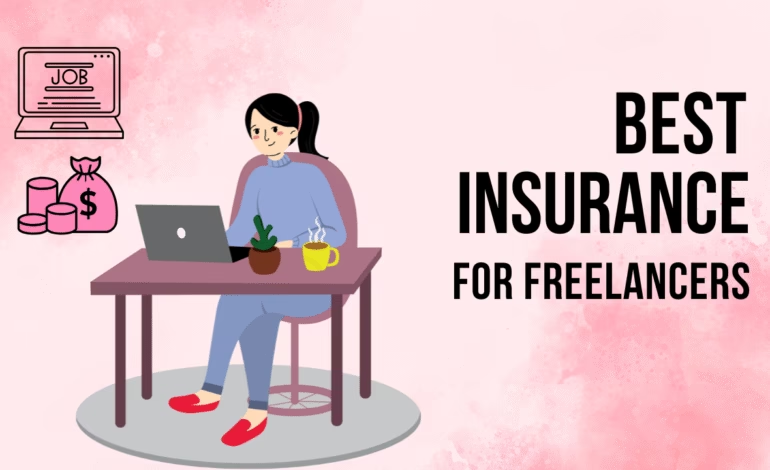Insurance is one of those financial products that promises peace of mind. It’s supposed to protect you from unexpected events, and in many cases, it does exactly that. But somewhere along the way, the insurance industry became a business of selling fear rather than real protection. People are often convinced to buy policies they don’t need, pay premiums for coverage that overlaps with what they already have, or sign up for services that offer very little real-world value.
If you live in the United States, the United Kingdom, Canada, Australia, or Singapore, you probably have several forms of insurance already such as health, auto, home, and life insurance. Those are generally important. But beyond these essentials, there’s a growing list of unnecessary insurance policies that add cost but little benefit.
The reality is, insurance companies and banks have become incredibly skilled at marketing. They know exactly how to trigger emotions like fear, guilt, and security to make you believe that one more layer of insurance is a wise choice. But in truth, many of these policies are redundant or simply not worth the premium.
This article breaks down three major Unnecessary insurance policies you probably don’t need, explains why people overpay for them, and helps you make smarter financial decisions.
Before we start, ask yourself a simple question.
If you couldn’t use a particular insurance policy in the last five years, do you really need to keep paying for it?
Most people never pause to evaluate their insurance portfolio. They simply renew every policy year after year because it feels safe. By the end of this blog, you’ll be able to identify which policies are worth keeping and which ones are silently draining your savings.
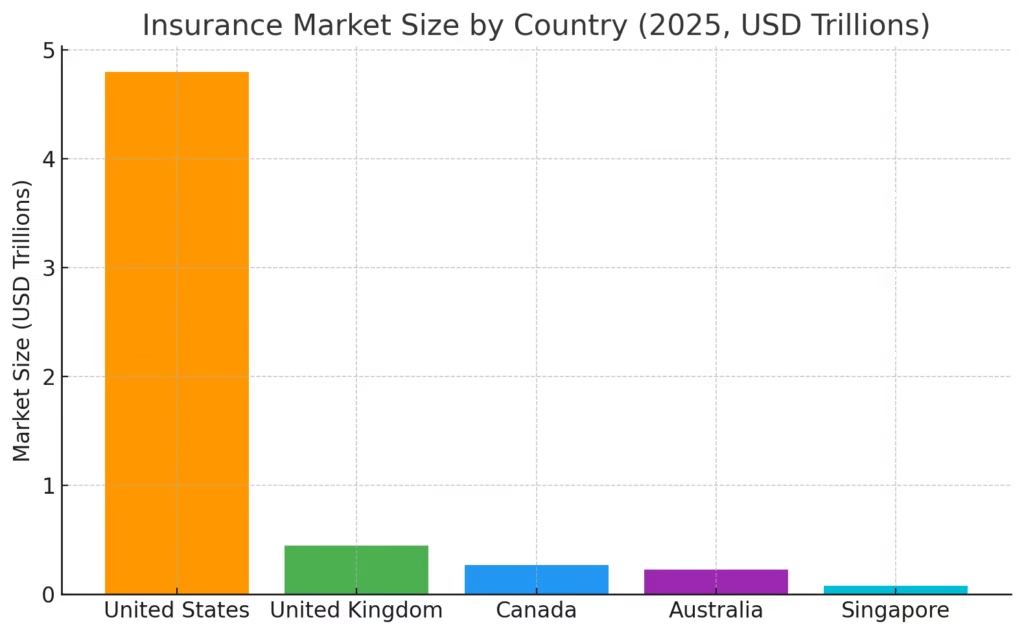
1. Credit Card Insurance
Let’s start with one of the most commonly sold but least necessary insurance products, credit card insurance.
This is often marketed as payment protection insurance or balance protection insurance. The idea is simple: if you lose your job, get sick, or become disabled, the policy will cover your monthly credit card payments. On paper, it sounds responsible. In reality, it is one of the policies people overpay on insurance without realizing it.
Why It’s Usually Unnecessary
Credit card insurance premiums are typically high compared to the potential benefit. Many policies charge a small percentage of your balance each month, which can add up to hundreds of dollars a year.
The problem is that the coverage is extremely limited. Most plans only apply if you meet very strict conditions, and claims are often denied for technical reasons. For example, if you are self-employed, work on contract, or leave your job voluntarily, the insurer may refuse your claim.
In addition, most credit cards already come with built-in protections. For example, in the US and UK, cardholders are legally protected against unauthorized transactions. Many cards also include purchase protection, travel insurance, and extended warranty coverage at no extra cost.
That means paying for credit card insurance often duplicates benefits you already have.
Example
Consider a professional in Canada who pays $15 per month for credit card insurance. Over a year, that’s $180. Over five years, that’s $900. Unless they experience a rare situation where the policy actually pays out, that money is simply gone. Meanwhile, if they had placed the same amount into an emergency fund, it could have grown into something far more useful.
What To Do Instead
If you’re worried about covering your bills in case of job loss or illness, focus on building a three to six-month emergency fund instead. That’s real protection you control, with no fine print.
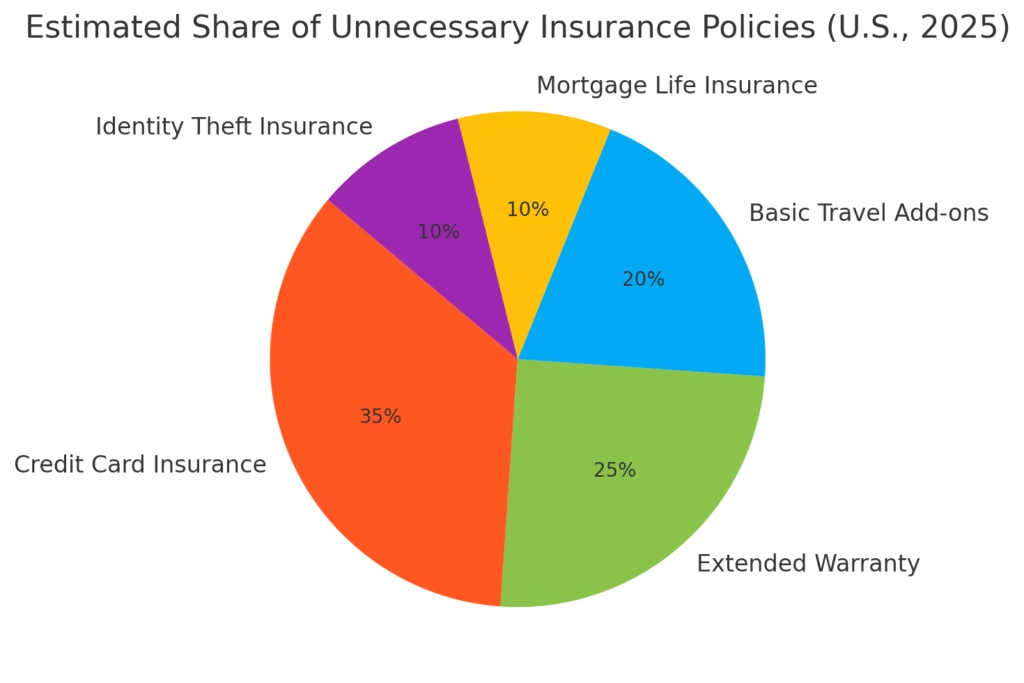
2. Extended Warranty Insurance
Extended warranties are another major category of insurance you probably don’t need. They’re often offered at checkout whenever you buy electronics, appliances, or even furniture. Salespeople love to present them as an essential form of protection, saying things like “You’ll thank yourself if something goes wrong.”
But statistically, most people never use them.
Why It’s Usually a Waste of Money
Most products already come with a one-year manufacturer’s warranty. Many credit cards automatically extend that warranty for another year if you use the card for your purchase. That means you’re already covered for the period when most defects appear.
Extended warranty insurance kicks in only after the original warranty expires, and by then, most products either still work fine or are cheap enough to replace.
Consumer Reports found that only about 4% of people who buy extended warranties ever end up using them. For the remaining 96%, the warranty is pure loss.
Example
Imagine buying a $1,200 laptop and paying $150 for an extended warranty that covers two extra years. Two years later, the laptop is still running perfectly, and a newer model has already replaced it in the market. That $150 is gone forever, and if the laptop had failed, most likely a local technician could have fixed it for less than the warranty cost.
The Smarter Option
Instead of buying extended warranties, set aside that money into a repair or replacement fund. Over time, you’ll have enough saved to handle any breakdown without relying on insurance.
Also, review your credit card benefits. Many premium cards in the US, UK, and Singapore already offer automatic extended warranty protection when you pay with the card.
A Quick Reflection
At this point, think about your last five big purchases. Did you buy an extended warranty or accept an insurance add-on? If yes, did you ever use it?
Most people realize that they didn’t need it at all. The reason they bought it wasn’t logic but emotion. Fear of loss and a desire for security drive most of these purchases. Recognizing that pattern can save you hundreds or even thousands over your lifetime.
3. Travel Insurance Add-Ons That Offer Little Real Value
Travel insurance can be one of the most confusing types of coverage. For frequent travelers, a comprehensive plan that covers medical emergencies or trip cancellations can absolutely be worth it. However, what most people don’t realize is that many travel insurance add-ons are unnecessary insurance policies disguised as “peace of mind.”
When booking a flight online, you’ve probably noticed an optional box that says “Add travel insurance for just $29.” It looks affordable and convenient, so people click yes without thinking twice. Unfortunately, this is often where money quietly leaks away.
Why Most Standard Travel Insurance Is Redundant
Many credit cards already include travel insurance benefits if you use the card to book your flight. These benefits can include trip cancellation, baggage delay, lost luggage protection, and even medical coverage abroad.
Let’s look at an example.
A traveler from the United States books an international flight using a premium Visa card. Without realizing it, they already have automatic travel accident insurance, trip delay reimbursement, and lost baggage protection through their card. When they check that extra box for travel insurance on the airline’s website, they are effectively paying twice for the same coverage.
The Real Issue: Limited Protection and Complicated Claims
The fine print of many travel insurance policies is intentionally complex. Some plans exclude coverage for pre-existing medical conditions, adventure sports, or any trip interruptions not caused by specific events.
For example, if your flight is canceled due to an airline staff strike, your claim might not be eligible. Similarly, if you fall ill but your illness was linked to a previous condition, the insurer may deny your claim entirely.
In other words, the “safety net” many travelers think they have might not actually exist when they need it.
Example
A couple from Australia purchased travel insurance through an airline for a vacation to Japan. When their flight was delayed for over 12 hours due to weather, they filed a claim for hotel expenses. The insurer rejected the claim, stating that weather-related delays were not covered under the plan’s “basic” tier. They had unknowingly bought the cheapest policy without realizing how restrictive it was.
That’s the reality of most travel insurance upsells: they appear inexpensive because they cover very little.
When Travel Insurance Actually Makes Sense
Not all travel insurance is bad. If you are traveling internationally and your health insurance doesn’t cover overseas medical care, a comprehensive travel insurance policy can protect you from unexpected medical costs abroad. However, this should be a standalone plan purchased from a trusted insurer, not a one-click add-on from an airline website.
If your trip involves adventure sports like skiing, scuba diving, or trekking, it’s worth verifying that your plan includes those activities. But if you’re only flying domestically or already have coverage through your credit card, the extra policy is probably unnecessary.
How to Decide
Ask yourself:
- Do I already have coverage through my credit card or employer?
- Does my existing health insurance include international treatment?
- Is the trip short enough that the risk of loss is minimal?
If your answers lean toward yes for the first two and yes for the last one, you can safely skip the airline’s travel insurance offer.
Hidden Insurance Traps People Don’t Talk About
Beyond credit card insurance, extended warranties, and basic travel insurance, there’s a long list of smaller policies that sound smart but rarely justify their cost.
These include:
- Flight accident insurance: Redundant if you already have life insurance.
- Pet injury coverage under auto insurance: Often duplicates pet insurance you may already have.
- Rental car insurance: Usually unnecessary if your credit card or personal car insurance includes rental coverage.
- Mortgage life insurance: Duplicates regular life insurance, which already covers your debts.
- Identity theft insurance: In many countries, banks are legally required to reimburse fraudulent transactions.
The insurance industry thrives on these small, emotional purchases. They use words like “peace,” “protection,” and “family” to make you feel responsible when you buy. But if you peel back the marketing, most of these add-ons protect the insurer’s profits more than your financial security.
Let’s take mortgage life insurance as an example.
It promises to pay off your mortgage if you die. That sounds noble, but most people already have life insurance that does the same thing and does it better. A standard term life policy will cover not only your mortgage but also your family’s other expenses. Mortgage life insurance, on the other hand, pays only the lender and not your family. It’s a limited product with a high premium and minimal flexibility. Learn the key differences between term and life insurance before deciding what coverage truly protects your family.
Why These Policies Persist
The persistence of these unnecessary insurance policies is tied to how people perceive risk. Insurance agents understand that fear of loss is a powerful motivator. They use scenarios that sound realistic enough to make you doubt your security:
“What if your spouse is left with a huge loan?”
“What if your flight crashes?”
“What if your dog gets hurt in an accident?”
These scenarios are emotionally persuasive but statistically rare. Most people end up paying for protection against events that will never happen.
Real Example
A UK homeowner once paid for mortgage life insurance for ten years. The premium was automatically added to their monthly mortgage payment. When they reviewed the fine print later, they discovered that if they refinanced or sold the property, the coverage would end automatically without refund. They had spent nearly £5,000 for a policy that offered no transferable value.
That’s how easy it is to lose money without realizing it.
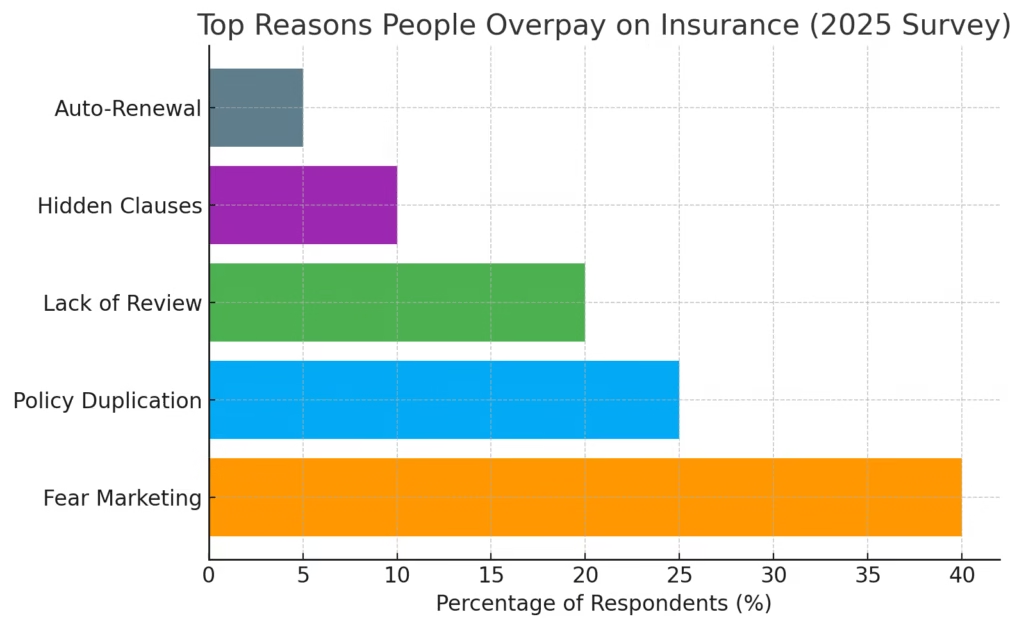
How to Recognize an Unnecessary Insurance Policy
Spotting these products early is key to saving money. Here are practical steps to help you evaluate whether a policy is worth keeping or skipping.
- Check for Duplication.
Before buying, ask yourself if you already have similar coverage elsewhere. Your credit card, employer, or another insurance plan might already protect you. - Read the Fine Print.
Many unnecessary insurance policies look valuable at first glance but hide exclusions in the details. Always read what events are actually covered and what conditions apply. - Evaluate the Cost-to-Benefit Ratio.
If you’re paying $200 a year for a policy that would only reimburse $500 under very specific conditions, it’s not worth the premium. - Ask the Hard Question.
“If I didn’t buy this insurance, what’s the worst realistic outcome?” If that outcome is something you can handle with savings or another policy, you can safely skip it. - Look for Independent Reviews.
Sites like Consumer Reports and MoneySavingExpert often review different insurance types. They provide unbiased opinions that can help you make smarter choices. - Use an Advisor Who Works for You, Not the Insurer.
An independent financial planner is paid to protect your interests, not to sell you add-ons.
At this point, you may have started to realize that insurance is not always about safety; it’s also a business of selling comfort. But understanding where to draw the line is what separates financially savvy individuals from those who constantly overpay. Use trusted insurance comparison websites to find policies that truly offer value and protection.
How to Audit Your Current Insurance Portfolio
By now, you’ve seen how easy it is to fall for policies that sound valuable but add little or no protection. The good news is that you can take control today. A simple, structured audit can help you identify unnecessary insurance policies, cancel them, and redirect that money into more productive areas like savings or investments.
Start by making a complete list of every policy you currently have. Include everything such as life, health, auto, home, pet, travel, and any smaller policies like gadget protection or balance insurance. Then go through each one with the following checklist.
Step 1. Ask What It Protects
Every policy should exist for a specific purpose. Ask yourself: what risk is this policy actually protecting me from? If you can’t clearly identify the risk or you already have another policy covering the same thing, that’s your first sign of overlap.
Step 2. Review Coverage Details and Exclusions
Many people skip reading the fine print, but this is where you’ll uncover the truth about what’s covered. For instance, if your mobile phone insurance doesn’t include loss or theft outside your home, is it really useful? Always read the exclusions carefully.
Step 3. Compare the Cost to the Benefit
Divide the annual premium by the maximum possible payout. If you’re paying $400 a year for a policy that might reimburse only $1,000 under very specific conditions, the value simply isn’t there.
Step 4. Check for Built-In Protections
Your bank, credit card, or employer may already provide similar coverage. For example, many employers in the US and Canada include accidental death and disability insurance as part of standard benefits. Duplicating that with a private policy means wasting money.
Step 5. Set a Date for Annual Review
Insurance needs change as your life changes. Reviewing your policies every year ensures you aren’t paying for something that no longer fits your situation. Cancel what’s redundant and adjust what’s essential.
Real-Life Case Studies: How Awareness Saves Thousands
Case 1: The Frequent Flyer from the UK
James, a consultant based in London, used to purchase travel insurance every time he booked a flight. After reading an article about redundant coverage, he checked his credit card benefits. It turned out that his Platinum card already covered trip cancellations, lost luggage, and emergency medical costs up to £2 million.
He stopped buying extra airline insurance and saved nearly £250 in one year. Over five years, that’s more than £1,200 saved simply by understanding what was already included.
Case 2: The Family with Multiple Warranties
A family in California bought extended warranties for every appliance in their home including the refrigerator, washing machine, television, and even a vacuum cleaner. When they added up the costs, they realized they were spending over $600 per year. In four years, none of those warranties had been used once.
After canceling all unnecessary coverage and setting up a household emergency fund instead, they saved enough to replace any broken appliance immediately without relying on an insurance claim.
Case 3: The Retiree Paying for Credit Card Insurance
Linda, a retiree from Singapore, had been paying $18 a month for credit card balance protection since 2016. When she finally reviewed her bank statements, she discovered that her retirement plan and personal savings already provided far better protection in case of illness or job loss. Canceling that single policy saved her more than $1,000 over the next five years.
These stories highlight one simple truth: once you recognize insurance you probably don’t need, you stop being a passive customer and become an informed consumer.
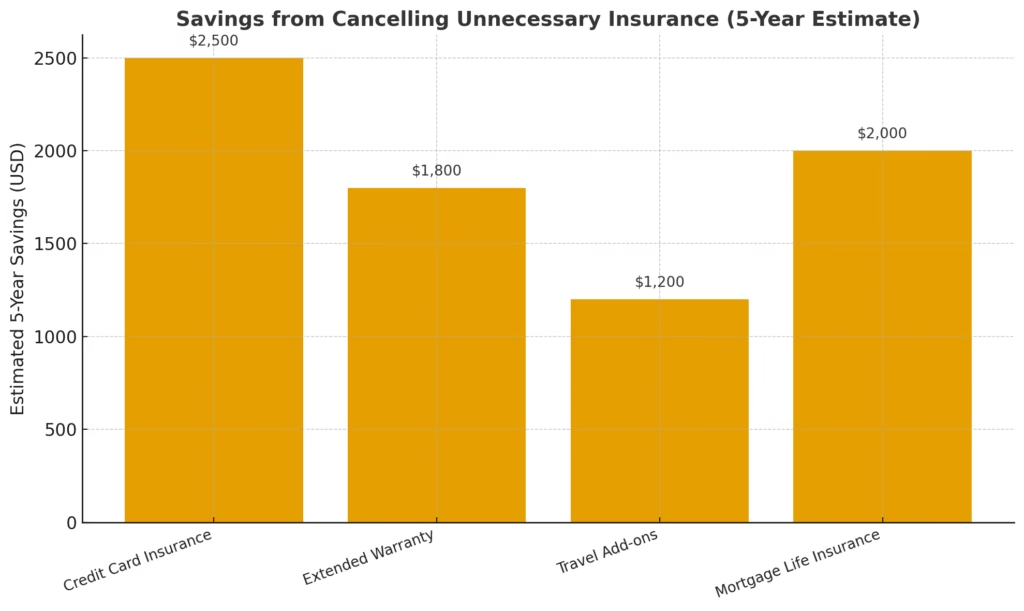
Smarter Financial Alternatives to Unnecessary Insurance
When you cancel a redundant policy, you don’t have to pocket the savings and forget about them. The best way to turn that money into real financial security is to redirect it wisely. Here are several ways to do that.
Build an Emergency Fund
An emergency fund acts as your personal insurance policy without any fine print. Experts recommend saving at least three to six months’ worth of expenses in an accessible account. This fund can handle job loss, medical emergencies, or unexpected repairs, all without requiring a claim or approval process.
Increase Essential Coverage Where It Matters
Instead of paying for multiple small, low-value policies, invest in strengthening the core ones. For instance, increase your health insurance deductible coverage or enhance your life insurance plan if you have dependents. A well-structured main policy offers better security than several small add-ons combined.
Invest in Income-Producing Assets
Money saved from canceling unnecessary insurance can be invested in retirement accounts, index funds, or bonds. This not only grows your wealth but also provides long-term security, something no short-term policy can match.
Maintain Preventive Habits
Insurance is reactive; prevention is proactive. Safe driving habits, healthy living, and regular home maintenance can reduce your risk of needing a claim in the first place. The best protection is often not insurance but behavior that prevents problems from occurring.
Expert Insight: How the Insurance Industry Markets Fear
Insurance sales depend heavily on emotional triggers. The most effective advertising campaigns rarely talk about numbers or probabilities. Instead, they use emotional imagery such as a worried family, a car accident, or a child in distress to make you feel vulnerable.
Psychologists call this the availability heuristic: when people can vividly imagine a bad event, they assume it’s more likely to happen. Insurance marketers use this bias masterfully. They make rare events feel probable, so you buy coverage for peace of mind rather than necessity.
Understanding this psychological tactic helps you pause and question your motives before signing up for a policy. Are you buying it because the risk is real or because the fear feels real?
Once you learn to separate emotion from analysis, you gain the confidence to say no to policies that don’t truly serve you.
How to Talk to Your Insurance Advisor
If you’re unsure which of your policies are essential and which are unnecessary, schedule a meeting with your insurance agent or financial advisor. But go into that conversation prepared.
Ask these questions directly:
- What specific risks does this policy cover?
- Do I already have similar coverage elsewhere?
- What are the most common reasons claims get denied?
- What happens if I cancel this policy or change providers?
- Can I get a written comparison of this policy and my existing coverage?
If your advisor hesitates or avoids direct answers, that’s a red flag. A trustworthy professional will explain both the advantages and limitations of any policy, not just the selling points.
The Bigger Picture: Insurance Should Protect, Not Profit
The purpose of insurance is to protect you from financial catastrophe, not to create small bills that drain your cash flow. Having too much insurance is almost as risky as having too little because it eats into your budget, reduces your ability to save, and creates a false sense of security.
Being insured does not always mean being protected. True protection comes from balance, having enough coverage for genuine risks but avoiding duplication and unnecessary costs.
If you’ve ever felt guilty about saying no to an insurance offer, remember this: saying no to a bad financial product is not irresponsibility; it’s financial maturity. Many policies, like extended warranties or credit card protection, offer limited value. For a detailed guide on unnecessary insurance policies, you can refer to Consumer Reports.
Final Thoughts
Most people buy insurance reactively. They sign up because a friend recommended it, an agent insisted on it, or a pop-up box appeared during checkout. Very few stop to analyze whether it’s truly useful. That’s why billions of dollars every year go into policies people overpay on insurance that offer little in return.
By understanding how to identify unnecessary insurance policies, you can take control of your finances, save thousands over time, and focus on protection that genuinely matters.
So, before your next renewal, take thirty minutes to review what you’re paying for. Cancel what you don’t need, strengthen what you do, and invest the rest in your future.
It’s a small step, but one that can change your entire financial outlook. Before purchasing any new coverage, it’s wise to follow consumer tips for choosing insurance wisely. The NAIC offers practical advice to help you avoid unnecessary spending.

